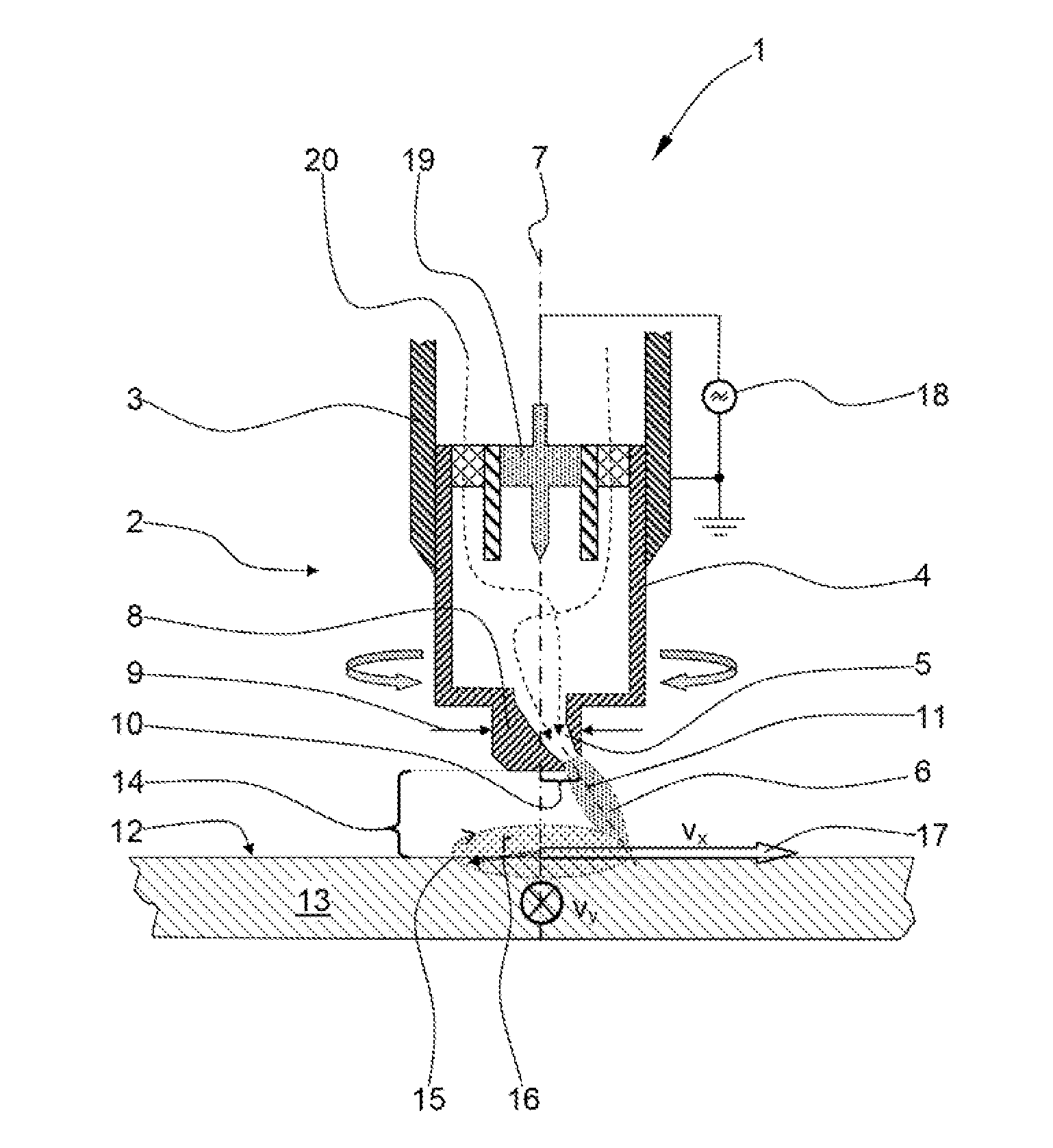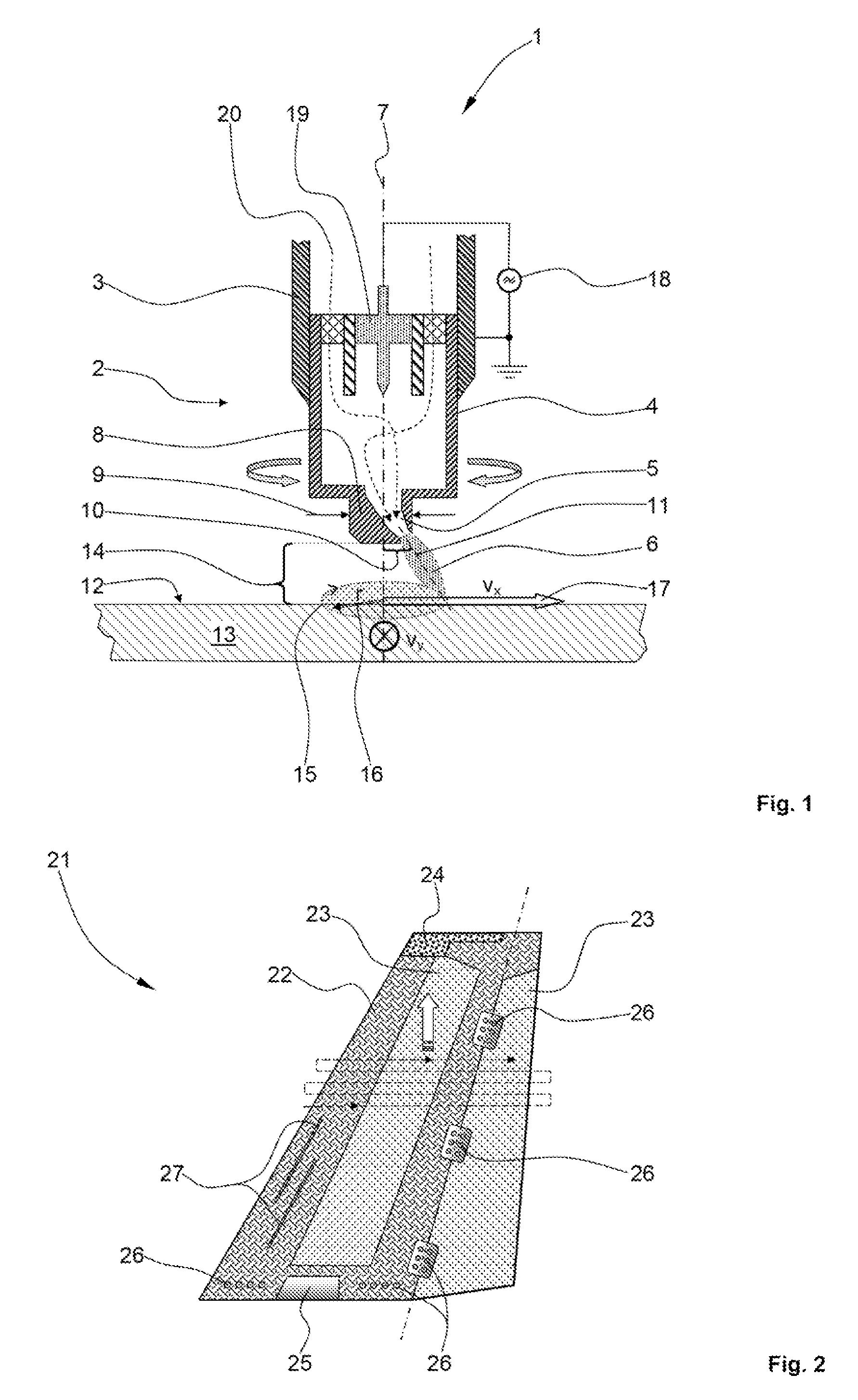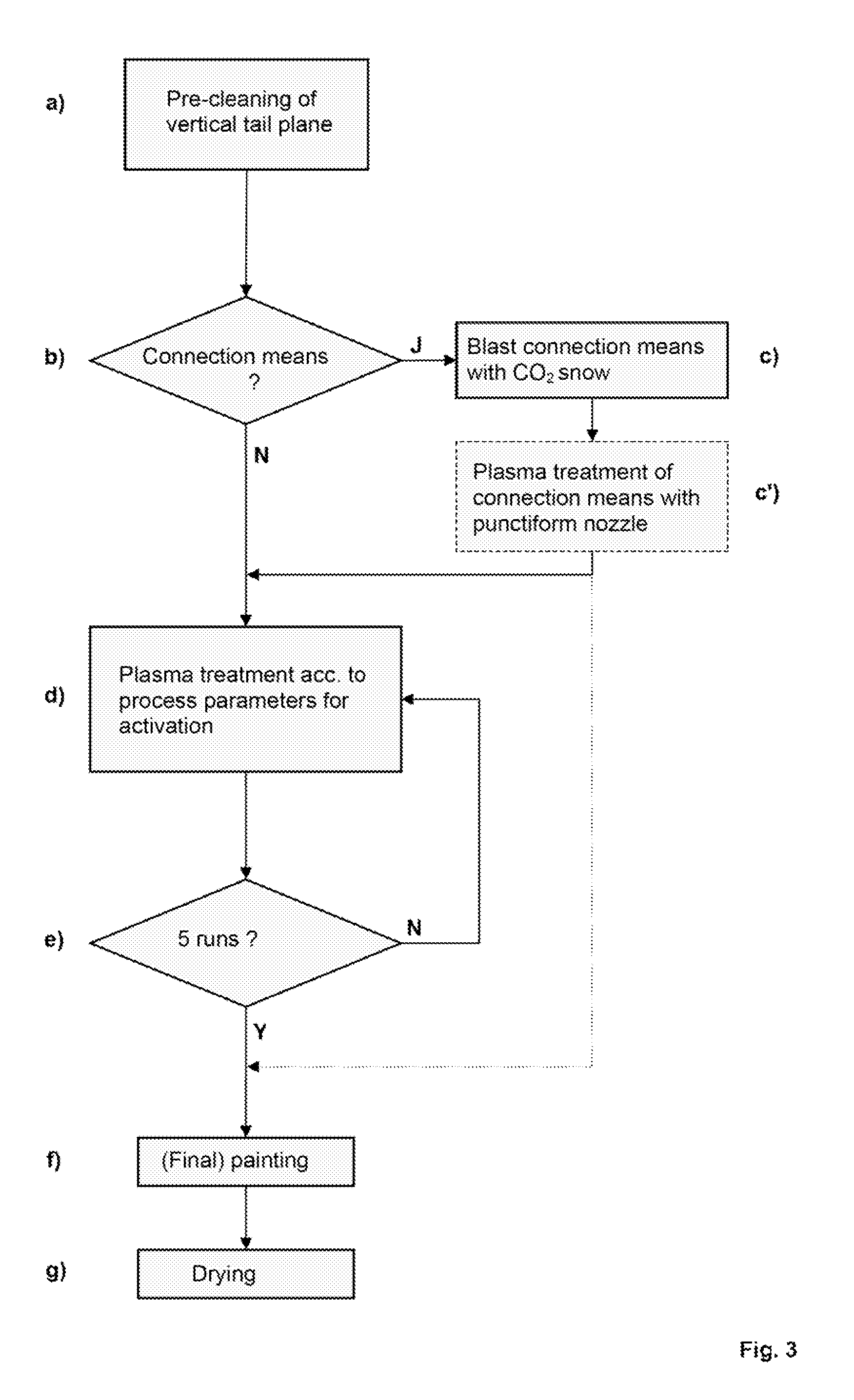Method for plasma treatment and painting of a surface
a plasma treatment and surface technology, applied in the field of plasma treatment and surface painting, can solve the problems of adhesion-relevant surface area and no mechanical-structural modification of the surface, and achieve the effect of preventing environmental contamination and improving the adhesion of a polymer
- Summary
- Abstract
- Description
- Claims
- Application Information
AI Technical Summary
Benefits of technology
Problems solved by technology
Method used
Image
Examples
Embodiment Construction
[0041]FIG. 1 shows a cross-section through the rotating plasma system having the type designation RD 1004 made by Plasmatreat® according to the European Patent Specification EP 1 067 829 B1, which is preferably used for carrying out the method according to the invention and which, unlike vacuum plasma systems, operates with normal air at ambient air pressure (so-called “APAP” apparatus (“Atmospheric-Pressure-Air-Plasma Apparatus).
[0042]A plasma system 1 comprises, inter alia, a plasma nozzle 2 having a holder 3 which accommodates a substantially hollow-cylindrical nozzle head 4 having an inclined outlet opening 5 for exit of a club-shaped plasma jet 6 which is rotatable about a longitudinal axis 7. The nozzle head 4 has a tapered section 8 on the underside, which incorporates the outlet opening 5 forming the actual nozzle for the plasma jet 6. The outlet opening 5 has a diameter of about 4 mm. The tapered section 8 has a diameter of about 20 mm whilst the distance 10 between the lon...
PUM
| Property | Measurement | Unit |
|---|---|---|
| distance | aaaaa | aaaaa |
| open time | aaaaa | aaaaa |
| open time | aaaaa | aaaaa |
Abstract
Description
Claims
Application Information
 Login to View More
Login to View More - R&D
- Intellectual Property
- Life Sciences
- Materials
- Tech Scout
- Unparalleled Data Quality
- Higher Quality Content
- 60% Fewer Hallucinations
Browse by: Latest US Patents, China's latest patents, Technical Efficacy Thesaurus, Application Domain, Technology Topic, Popular Technical Reports.
© 2025 PatSnap. All rights reserved.Legal|Privacy policy|Modern Slavery Act Transparency Statement|Sitemap|About US| Contact US: help@patsnap.com



